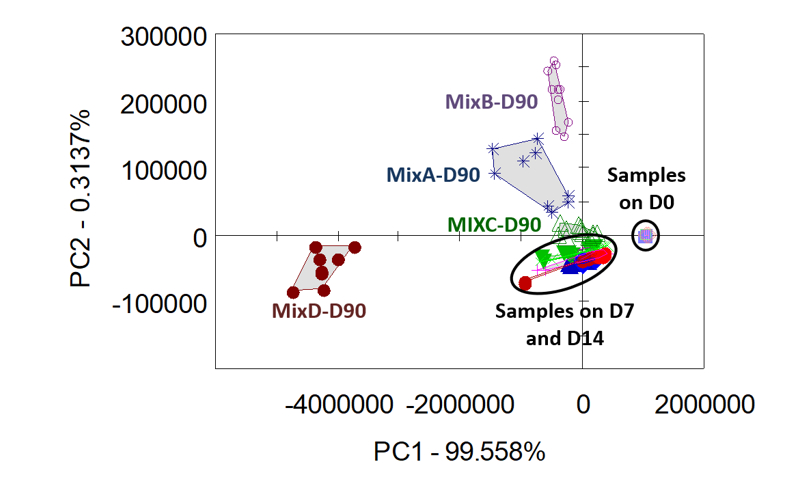An objective rapid analysis of fermented silages was developed in the Correltech® Laboratory of ADEXGO Kft., mainly based on the aromaprofile analysis. Instrumental odor analysis, which can be performed under field conditions, is still a long-term goal, but the results presented with the coworkers of the Hungarian University of Agriculture and Life Sciences and Livestock Performance Testing Ltd. are encouraging and justify further thorough research in the field.
Aroma profile, microbial and chemical quality of ensiled green forages mixtures of winter cereals and Italian ryegrass
Alemayehu Worku, Tamás Tóth, Szilvia Orosz, Hedvig Fébel, László Kacsala, Balázs Húth, Richárd Hoffmann, Haruna Gado Yakubu, George Bazar, Róbert Tóthi
The objective of this study was to evaluate the aroma profile, microbial and chemical quality of winter cereals (triticale, oats, barley and wheat) and Italian ryegrass (Lolium multiflorum Lam., IRG) plus winter cereal mixture silages detected with an electronic nose. Four commercial mixtures (mixture A (40% of two cultivars of winter triticale + 30% of two cultivars of winter oats + 20% of winter barley + 10% of winter wheat), mixture B (50% of two cultivars of winter triticale + 40% of winter barley + 10% of winter wheat), mixture C (55% of three types of Italian ryegrass + 45% of two cultivars of winter oat), mixture D (40% of three types of Italian ryegrass + 30% of two cultivars of winter oat + 15% of two cultivars of winter triticale + 10% of winter barley + 5% of winter wheat)) were harvested, wilted and ensiled in laboratory-scale silos (n = 80) without additives. Both the principal component analysis (PCA) score plot for aroma profile and linear discriminant analysis (LDA) classification revealed that mixture D had different aroma profile than other mixture silages. The difference was caused by the presence of high ethanol and lactic acid (LA) in mixture D. Ethyl esters such as ethyl 3-methyl pentanoate, 2-methylpropanal, ethyl acetate, isoamyl acetate and ethyl-3-methylthiopropanoate were found at different retention indices in mixture D silage. The low LA and higher mold and yeast count in mixture C silage caused off odour due to the presence of 3-methylbutanoic acid, a simple alcohol with unpleasant camphor-like odor. At the end of 90 days fermentation winter cereal mixture silages (mixture A and B) had similar aroma pattern, and mixture C was also similar to winter cereal silages. However, mixture D had different aromatic pattern than other ensiled mixtures. Mixture C had higher (p < 0.05) mold and yeast (Log10 CFU (colony forming unit)/g) counts compared to mixture B. Mixture B and C had higher acetic acid (AA) content than mixture A and D. The lactic acid (LA) content was higher for mixture B than mixture C. In general, the electronic nose (EN) results revealed that the Italian ryegrass and winter cereal mixtures (mixture D) had better aroma profile as compared to winter cereal mixtures (mixture A and B). However, the cereal mixtures (mixture A and B) had better aroma quality than mixture C silage. Otherwise, the EN technology is suitable in finding off odor compounds of ensiled forages.

Aroma-based separation of the mixed silages on the 90th day of the fermentation
Access the full paper free of charge on the website of the journal:
